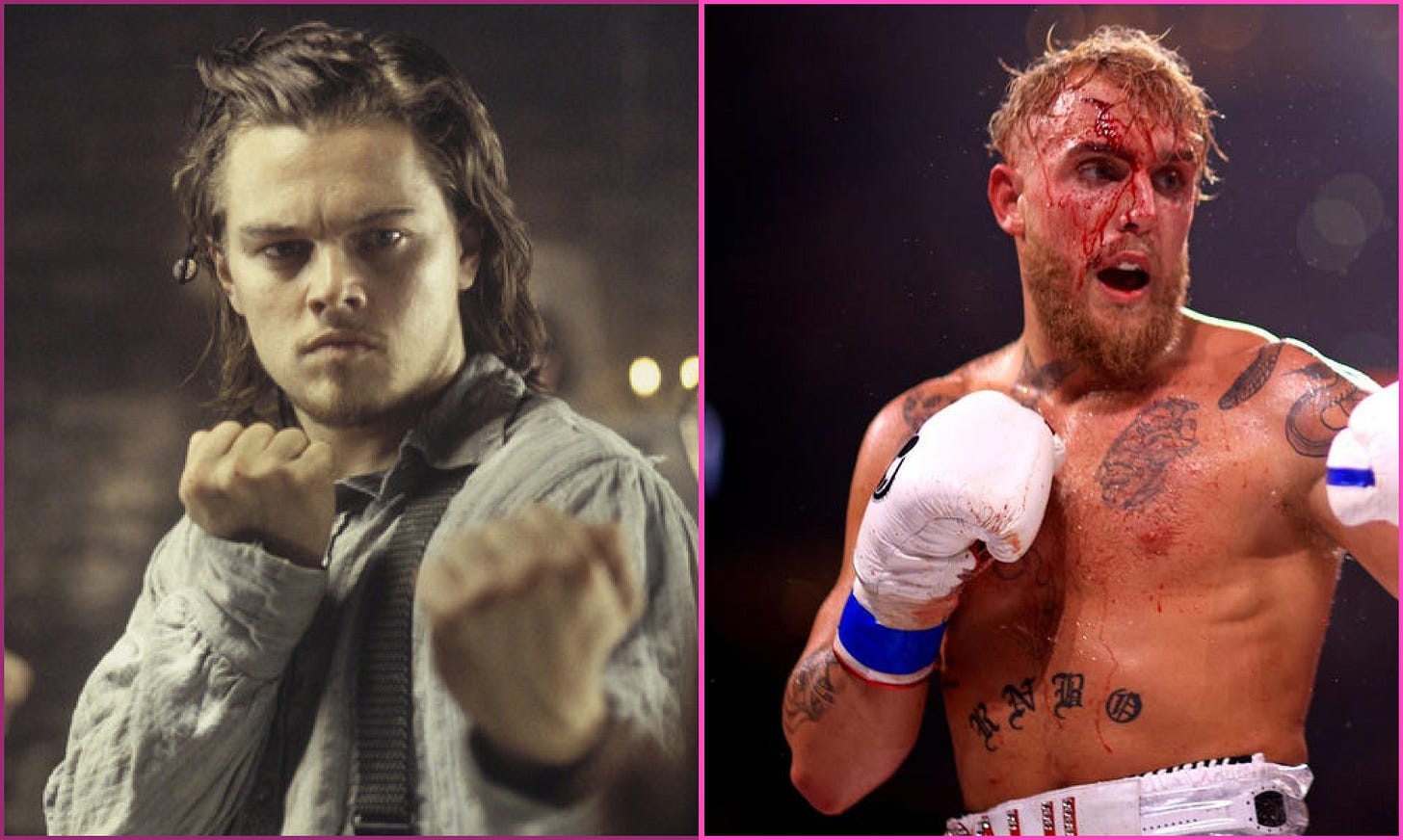On 21st Century Stars, Social Media, and the Death of Hollywood
Or why the next Leonardo DiCaprio won't, and doesn't, look like Leonardo DiCaprio
The modern Movie Star is The Influencer—The Pauls, The Kardashians, The PewDiePies, The D’Amelio’s of the world. Is it even a contest who drives youth culture more—and thus the culture of the future—between a Jake Paul and Timothée Chalamet or a Charli D'Amelio and Jennifer Lawrence? The star of the smartphone, The Influencer, has more cultural cachet than the native star of the big screen, The Movie Star.
In every aspect—from production to distribution, to reaction, to fan-star interaction the art of The Influencer could not be more different than the art of a Movie Star. The Influencer creates and distributes their own content through the same device you and I use, their content is much more spontaneous and organic—particularly compared to the rigidity of a film’s production. Finally, The Influencer has a natural tight two-way relationship with their fans. The Influencer quickly creates and immediately distributes their content directly to their fans. Fans can then immediately react to the Influencer’s content. The Influencer can then respond to the fans’ responses—back and forth they go—building a more intimate kind of connection. In terms of pure mechanics, the internet is a much more interactive medium than film and allows for a much cheaper and more efficient mode of content production, distribution, and iteration.
On the other hand, The Movie Star is just one component, albeit a key one, of a massive production. The films with the same cultural weight of the biggest Influencers—that is the films that Movie Stars actually star in—take several years, several thousands of people, and several hundred million dollars to create and distribute. Since these films are so costly—both in terms of money and manpower—they must be as close to as a guaranteed hit as possible. As a result, most new films rely on decades-old tropes, decades-old stars, and decades-old brands.
There is a philosophical concept that arose in the 19th century, that of the Gesamtkunstwerk—or the ultimate art. That one art that would synthesize all other art forms and forge superior masterpieces to each of its constituent parts. For much of the 20th and early 21st-century film was thought to be this ultimate art form. And the star of film—The Movie Star—thought to be the ultimate artist. Now it is social media that has supplanted film as the ultimate art through its ability to capture a much higher fidelity version of reality—a role that film itself had supplanted from older art forms such as drama and radio. It is the Star of Social Media—The Influencer—that has become the ultimate artist. The artifice of the Movie and The Movie Star has simply withered under the light of cyber.
Thus we see that the vitality of the Movie Star’s native land—Hollywood—has been drained away. We are awash in more entertainment content than ever before yet seemingly paradoxically the centralized cultural mainstream—of which Hollywood is the crown jewel of—seems stuck. How did this happen? In short, the one-two punch of near-universal internet connection and smartphone usage—the very developments that have made The Influencer’s ascension possible—fractured our previously collective centralized culture. TV, movies, newspapers, CDs, and radio kept broad swathes of the public aligned to the same taste. If you didn’t share this taste you were mostly out of luck. Smartphones have allowed us to escape out of the narrow confines of the collective centralized culture and into our own individual decentralized culture[s]. [1] [2]
This is why Hollywood must rely on box office draws that became famous pre-2010 or so—when smartphone usage reached a tipping point. The Stars and Franchises that made it big before this time are the last remnants of a collective centralized culture. From Movie Stars such as Leonardo DiCaprio and Dwanye “The Rock” Johnson to Franchises such as Fast and The Furious and Mission Impossible Hollywood’s current box office draws were minted decades ago. Compounding matters the ability of Hollywood to mint new box office draws is lacking. This is due to the massive amount of entertainment options we now have as well as to the fact that Hollywood has become less talented over time—just as the number and quality of Hollywood’s competitors have skyrocketed. Hollywood is gripped in a rehashing of tropes and industry-wide cultural practices that prevents it from achieving its nominal goal of entertainment. How ironic for an industry that praises diversity to be so rigid—so unified—in thought and deed.
What happens going forward? Well, most Influencers will be extremely beloved among a small percentage of the population. This even includes those Influencers with millions of followers. There will still be a handful of Mainstream Stars universally recognized in the fields of cultural production as well as other fields such as politics and technology. However, reaching this elite level will become much more difficult just as—at the same time—achieving 15 minutes of fame has become much much easier.
[1] LindyMan, viral Substack pieces, and YouTube videos have bemoaned the fact that in all mediums, film, video games, and music we see the same franchises being remade, rehashed, and remixed
[2] Smartphones have not only made the film business much more difficult but even within the internal logic of film smartphones make most plot points nonsensical. How many horror movies would end right away if the protagonist had a smartphone?



